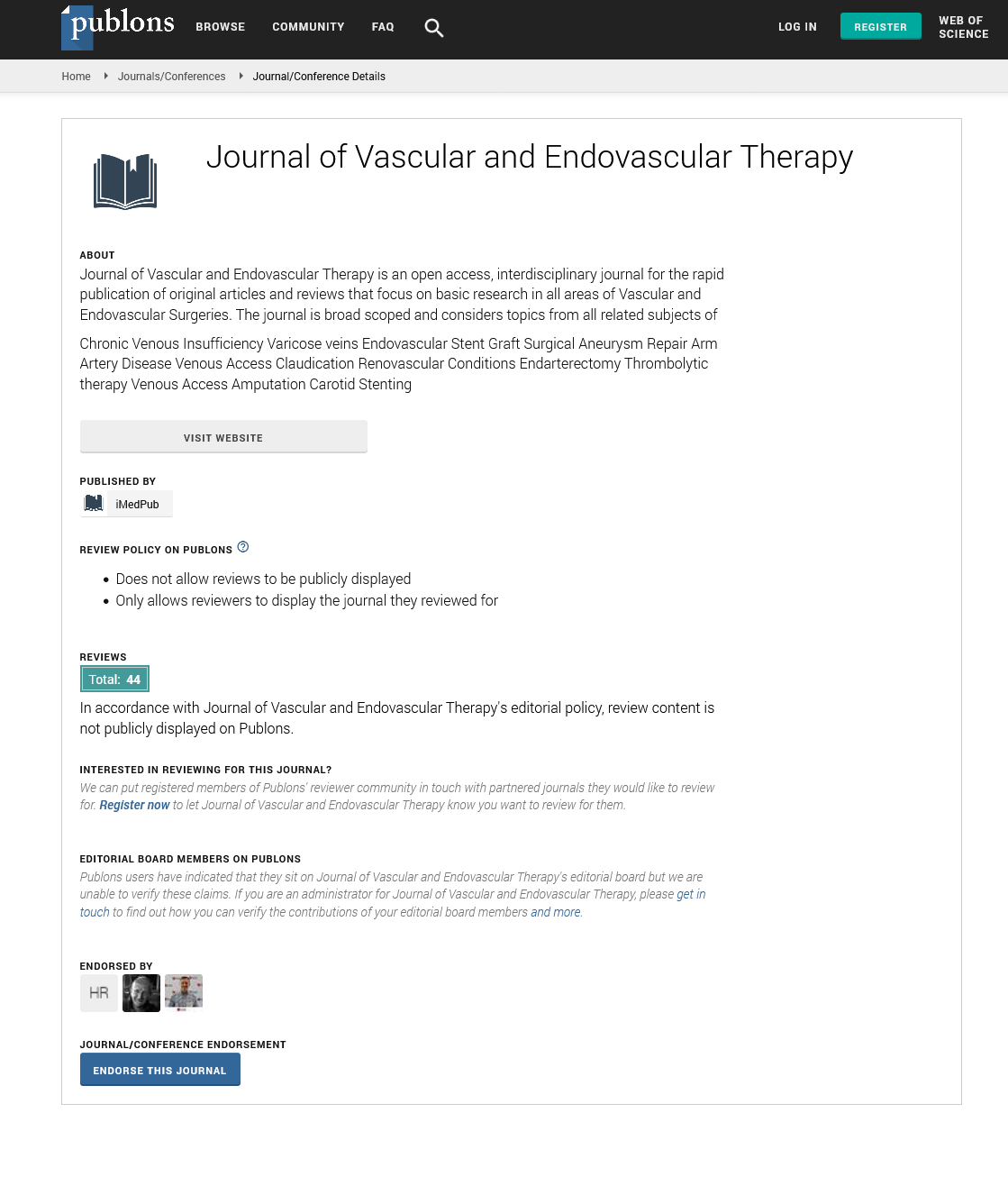ISSN : 2634-7156
Journal of Vascular and Endovascular Therapy
Stenosis of the brachiocephalic vein and percutaneous thoracic thrombectomy with thrombectomy system- case report
4th Edition of World Congress & Exhibition on Vascular Surgery
March 28-29, 2019 Rome, Italy
E Swiecka, M Khaznadar, T Kronert and R Zippel
Elbe-Elster-Klinikum, Germany
ScientificTracks Abstracts: J Vasc Endovasc Therapy
DOI: 10.21767/2573-4482-C1-005
Abstract
Recurrent or long-term central catheterization could lead to central thoracic venous stenosis or occlusion. The symptoms are a shunt/fistula dysfunction or occlusion with visible collateral circuit on the skin and increased venous pressure during hemodialysis. A 78-year-old male with a 10-year history of hemodialysis contacted our service with a dysfunction and aneurysm of the native brachiocephalic fistula. Ultrasound and shuntography confirmed a partialthrombosed aneurysm and a small-caliber cephalic vein. Both methods did not allow a clear statement on the central venous outflow. During the first operation, the aneurysm was resected, and the fistula vein repaired with a bovine pericardial patch. Intraoperatively, the vein was visualized and dilated in the proximal third and the result secured with a covert stent. On the second postoperative day we had to register a re-occlusion of the fistula and caused an angio-CT of the thoracic veins, which showed a high grade stenotic brachiocephalic vein and a moderate stenosis of the subclavian vein. In a second procedure, partial resection of the shunt vein with interposition of an alloplastic vascular prosthesis and stenting of the brachiocephalic vein were performed. On post op day 1, the reconstruction was occluded again. The percutaneous thrombectomy was performed from central to peripheral using a thrombectomy system via shunt-prosthesis. This was followed by a stent application from the brachial vein via the subclavian vein to the already stented cephalic vein. A regular 8-week followup showed regular shunt function, no re-occlusions and/ or need for further operations. In the case of recurrent occlusion of dialysis shunts or fistulas, a central venous drainage obstruction must always be ruled out. In a simultaneous thrombosis of the vascular access, the use of a thrombectomy system is effective and safe. Detected stenoses of the central veins require stent restoration after dilatation. Even with the use of relatively small-caliber stents, we have seen no problems over an observation period of two years.
Biography
E Swiecka graduated from the Medical University in Gdansk, Poland. In 2004 she moved to Germany in order to practice medical profession. She conducted her residency (stage practice) in vascular surgery in Augusta Hospital in Düsseldorf under supervision of prof. R. Kolvenbach and in DRK- Hospital in Berlin under Dr. M Naundorf. Between July 2014 and July 2017 she held a post of the Consultant of Vascular Surgery at the Medical University of Brandenburg in Neuruppin, Germany. In March 2018 she took a post of the Senior Consultant at the Vascular and Endovascular Surgery Department in Elbe-Elster Klinikum in Herzberg, Germany. She is a Member of many national and international medical societies, including European Society for Vascular Surgery, Polish Vascular Surgeon Society and Bulgarian Society of Vascular Surgery. As for hands-on clinical experience, she specializes in carotid and dialysis surgery as well as endovascular procedures.
E-mail: eswiecka1@googlemail.com
Google Scholar citation report
Citations : 177
Journal of Vascular and Endovascular Therapy received 177 citations as per Google Scholar report
Journal of Vascular and Endovascular Therapy peer review process verified at publons
Abstracted/Indexed in
- Google Scholar
- Open J Gate
- Publons
- Geneva Foundation for Medical Education and Research
- Secret Search Engine Labs
Open Access Journals
- Aquaculture & Veterinary Science
- Chemistry & Chemical Sciences
- Clinical Sciences
- Engineering
- General Science
- Genetics & Molecular Biology
- Health Care & Nursing
- Immunology & Microbiology
- Materials Science
- Mathematics & Physics
- Medical Sciences
- Neurology & Psychiatry
- Oncology & Cancer Science
- Pharmaceutical Sciences
